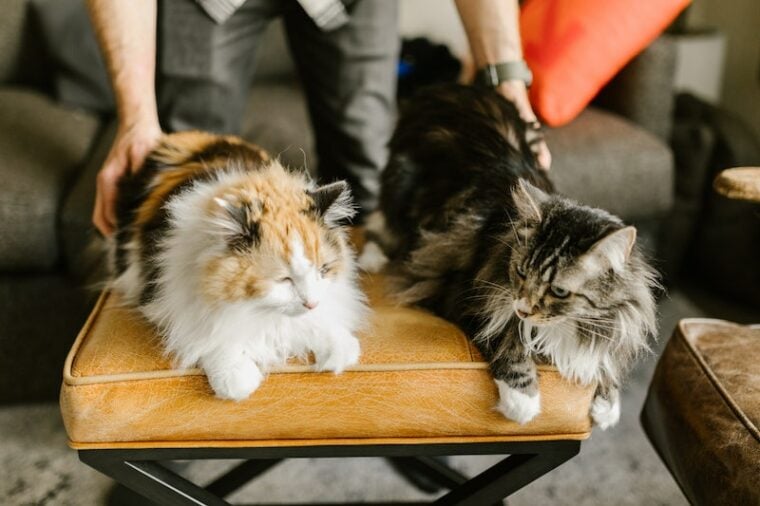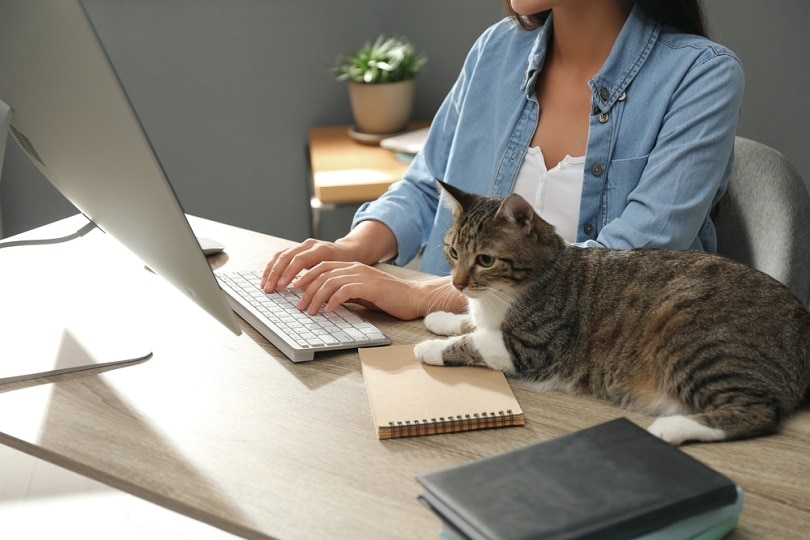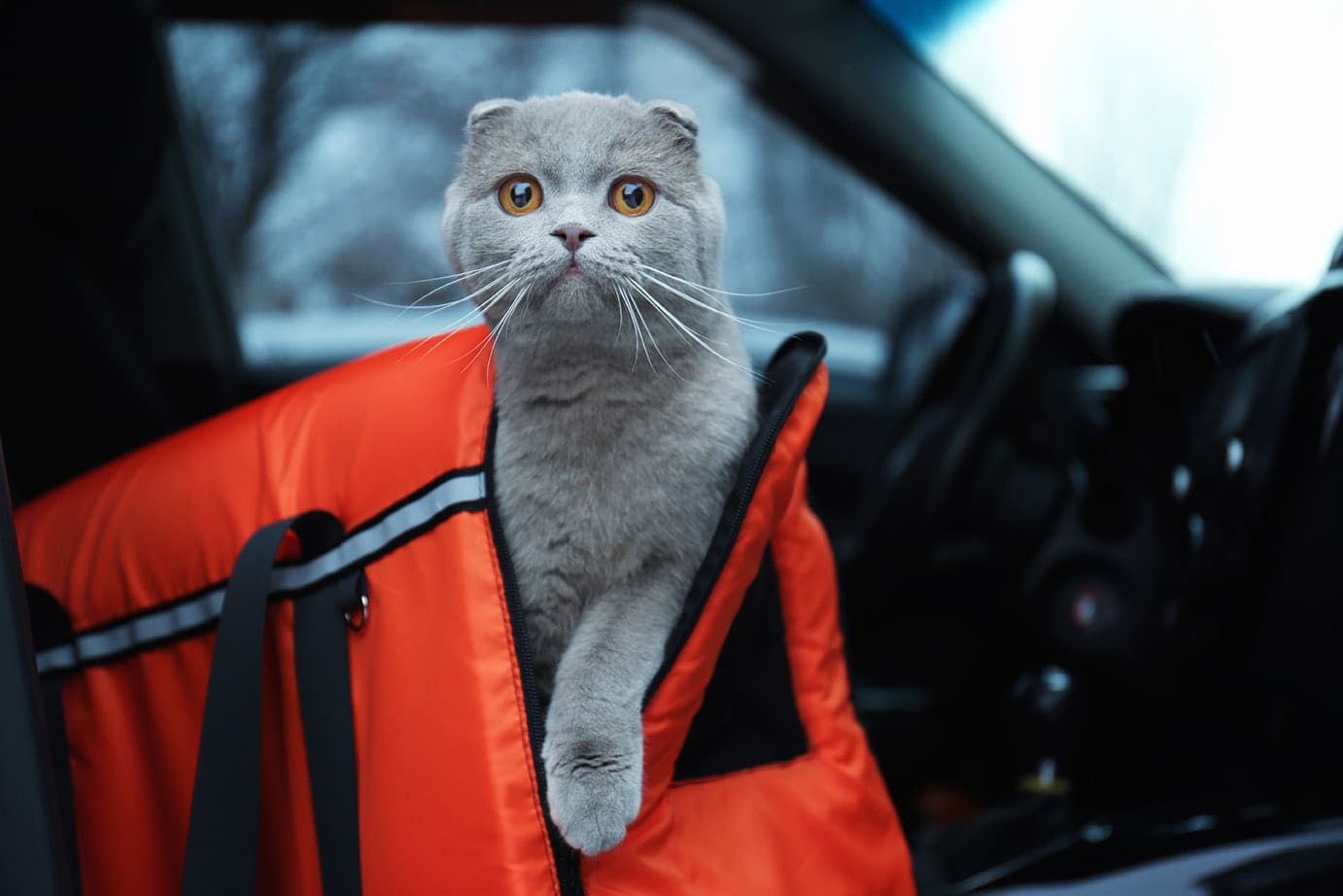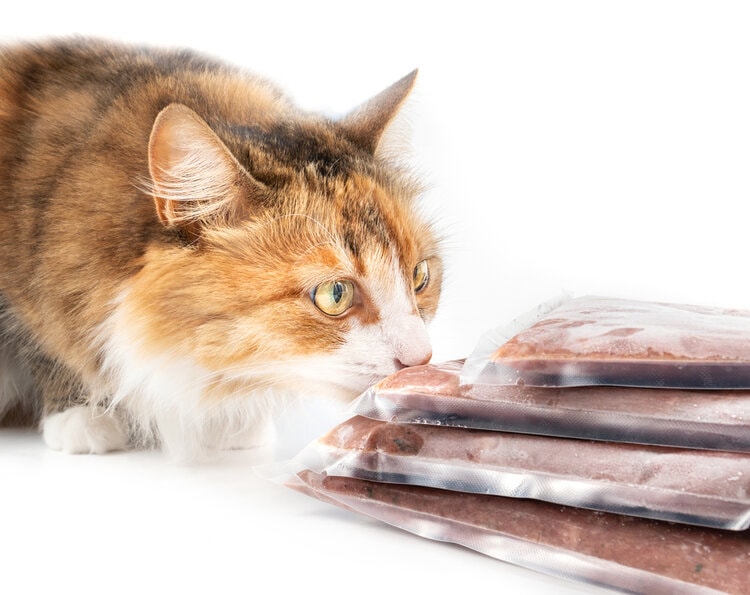
Traveling can be stressful on a good day but attempting to travel with two cats can feel a lot like, well, herding cats. It’s important for the comfort and safety of your cats, as well as yourself, to be thoroughly prepared for the trip before attempting to travel with your cats. Otherwise, you may end up with a lost cat, a mess in your car, or a cat causing an accident.
To make things simpler and safer for yourself and your cats, check out these tips on traveling with two kitties.
The 12 Tips to Travel With Two Cats
1. Plan Ahead
Don’t attempt to go on a trip with two cats without doing plenty of planning. This will vary based on how you are traveling, though. If you are planning to drive with your cats, then you’ll need to have your route laid out ahead of time so you can plan for places to stop with your cats.
Not every hotel or motel will take two cats in a room, so if your trip is going to extend across multiple days, then you need to have places to stay selected before you go. It’s also best to identify what veterinary care may be available along your route, just in case.
Air travel with pets is a whole other animal. There are very specific rules and requirements that you need to be aware of if you’re attempting to fly with both of your cats. International travel rules are even more stringent than travel within the US, so check the requirements multiple times to make sure you don’t miss anything.

2. Make Sure Everything Is Updated
One of the most important things you can do for your cats before any type of travel with them is to ensure that all their records are updated. This entails making sure they are up to date on all necessary vaccinations, including those needed for the place you’re taking them to. Have printed records of everything on you at all times during travel.
You also need to make sure to have their microchip information fully updated with your contact information. Unfortunately, it’s not uncommon for pets to get loose during travel, which can be extremely dangerous for them. If one or both of your cats gets loose while traveling, you want to make sure whoever finds them will be able to contact you with no issues. The last thing anyone wants is for their pets to go to a shelter or be adopted by another family.
3. Get the Right Carriers
When it comes to traveling with cats, any old carrier just won’t do. You need to select carriers that are extremely secure while still allowing your cat some space to move around. If you’re flying with your cats, the airline will have very specific regulations regarding the size and type of carriers you have your cats in, and the regulations are typically different if your cat is flying in the cabin or in cargo.
One thing that many people get wrong about traveling with two pets is putting them in a carrier together. While some cats may be comforted by the presence of their companion, it is usually safest and most comfortable for your cats to have their own carriers.
When kept together in high-stress situations, cats may become aggressive or react fearfully, which can lead to fights or injuries to one or both cats. Keeping them in one carrier also increases the risk of them bumping against each other during travel.

4. Talk to Your Vet
Even if you’re moving away, your vet needs to know that you’ll be traveling with your cats. They will be able to give you guidance, records, and medications if necessary. Cats can benefit from anti-anxiety medications during travel, but these should only be given under the direction of a veterinarian.
While you may know how your cat will act on a quick trip to the vet, you likely don’t know how they’ll respond to things like long stretches of time in the car or flying on an airplane.
Your vet will also be able to ensure that your cats are healthy enough and set for the trip. Some cats just are not well enough to travel, in which case you may need to find other arrangements for your cat. Your vet will give your cats a thorough exam and review their records, making sure you have enough medications that your cats may require for their medical conditions.
If you are moving, your vet is likely to give you enough medication to cover a couple of months, so you have time to get established with a vet at your new home.
5. Withhold Food if Needed
Some kitties, like people, get car sick. Some cats will experience nausea any time they are in the car, while others may only experience it when in the car for an extended period. While anti-nausea medications from the vet can help with car sickness, you can also help settle your cats’ tummies by withholding food for 3–4 hours prior to the trip.
Don’t plan to withhold food for extended periods like you would for a surgical procedure, though. Having an empty tummy may also result in your cat experiencing nausea and discomfort. Feed your cat a meal a few hours before you plan to leave but avoid feeding food or treats just before the trip.

6. Practice with the Carrier
One of the ways you can help your cats be more comfortable during the trip is by getting them used to their carriers well in advance. You can start by having the carriers out in the open so your cats get used to seeing them and they take on some of the smells your cats are familiar with. As time goes on, you can start encouraging your cats to enter the carriers by offering treats or putting their toys or bedding in them.
Eventually, your cats will be ready to go for a few “test drives” in their carriers. This can be a quick drive around the block, but it will help your cats get used to the feeling of being in the carrier and the movement of a vehicle. Try to increase the length of the drives your cats experience in the carrier to help prepare them for a longer trip.
7. Always Crate While Driving
It may be tempting to take one or both of your cats out of the carriers during your trip. After all, it feels like everyone would be comforted by a little snuggle, or you may think that your curious cat will want to sniff around the car.
Unfortunately, it’s extremely unsafe to have a cat loose in a moving vehicle. You should also consider securing the carriers with seat belts or tie-downs.
Cats that aren’t used to traveling may panic once out of the carrier, which can result in them injuring themselves or causing a major driving distraction. If your cat hurts the driver or gets in the way of the pedals, they may also cause a car accident.
It’s also unsafe for your cats to be loose in the car in the case of an accident. A carrier will ensure your cats don’t become projectiles in the event of a car accident. A major accident with a loose cat in the car can result in serious injury.

8. Leashes May Be Necessary
If you’re one of the people who has tried to leash train your cats, then you likely realize how tough this can be. Most cats will get comfortable using a leash and harness with enough time and training, but some cats will not tolerate it, regardless of what you try. When traveling with your cats, though, leashes and harnesses may become necessary.
This isn’t because your cats should be loose or leashed while the car is moving, though. If at any point you expect to have your cats out of their carriers anywhere but inside of a hotel room, then they should be leashed. All it takes is one person opening a car door or window for your cat to jump out and get lost or hurt.
Even if your cats seem calm, they are at a huge risk of escaping during travel. If you have any plans to take your cats out of their carriers at any point during the trip except inside an enclosed room, then they should be at least somewhat comfortable wearing a harness and a leash.
Finding a great cat harness can be tricky. Our favorite is Hepper's Cat Harness & Leash Set, which includes a soft, adjustable velvet harness and a premium climbing rope leash.
With safety features like quick-release buckles, reflective stripes, and reinforced stitching, you'll love this machine-washable harness as much as your cat will!
At Pet Keen, we've admired Hepper for many years, and decided to take a controlling ownership interest so that we could benefit from the outstanding designs of this cool company!
9. Make the Carriers Comfy and Hygienic
It’s often recommended to include something in each cat’s carrier that will help them feel safe and secure. This can be bedding, a piece of your clothing, or toys they enjoy. Aim to make the carrier as comfortable as possible for each cat, though. Providing crate mats is a good way to add a layer of cushion without adding excess bedding.
Remember that, if flying, there are restrictions on what you can have in your cats’ carriers, and that excess bedding poses a suffocation risk during air travel.
It’s also a good idea to provide each cat with a litter box or a pee pad in the carrier. Accidents do happen when cats are stressed, and it’s also possible that your trip will be longer than your cat can hold it. You don’t want your cat stuck lying in their own urine or feces during the trip, though.
Absorbent pads or the option to use a litter box can reduce the risk of this happening. Of course, adding a litter box to the carriers, even if small, will require a decently sized carrier.

10. Check and Double Check Closures
Before you set out, don’t just check the closures on your cats’ carriers once. Check them multiple times. Sometimes, a crate lock of some kind will be necessary to ensure your cats’ carriers stay secure throughout the trip. Some zippers may be able to be forced open from the inside of the carrier, while other types of closures may come loose with too much movement.
If your cats will be in fabric or soft carriers, then you should check these thoroughly to ensure there are no holes, tears, or broken closures. These carriers are typically less secure than plastic or metal carriers, so extra care should be taken to ensure their security.
11. Pack Extras
When traveling with cats, you should plan to overpack rather than under-pack. If you are flying, you will be asked to include food and food and water bowls for your cats. If traveling by car, it’s still advisable to have these things available. Offer water at various points throughout your trip, and food is great to have on hand during travel by car as well.
Make sure to include any other extras that may be needed. Extra blankets, towels, and pee pads are often a necessity. Extra litter and cleaning supplies are great items to have within arm’s reach during travel.
You should also ensure you have extras of your cats’ records. Make multiple copies, keeping at least one copy with you all the time.

12. Promote Calmness
Traveling with both of your cats is likely going to be stressful for you, no matter how easily the planning and trip go. Cats are usually very in tune with your feelings, though, which means your stress can lead to stress for your cats. Try to keep everyone calm and level during the packing and the trip itself.
Speak in a calm voice in a normal tone, try not to slam things around while packing, and aim to make the car as comfortable as possible for car trips. You should also consider the soundtrack of your trip and how you can use it as a calming tool. Loud music and movies may cause extra stress for your kitties, while quiet, soothing sounds may help calm them.
 Conclusion
Conclusion
Traveling with both of your cats isn’t going to be an easy task, but it can be done successfully and safely with proper planning. Don’t go into your trip blind, though. You need to be fully prepared before you even purchase carriers for your cats.
It will take work to make a trip safe and calm for your cats, but you can pull it off. Just remember to do everything you can to keep your cats safe and secure during the trip.
Featured Image Credit: RODNAE Productions, Pexels






